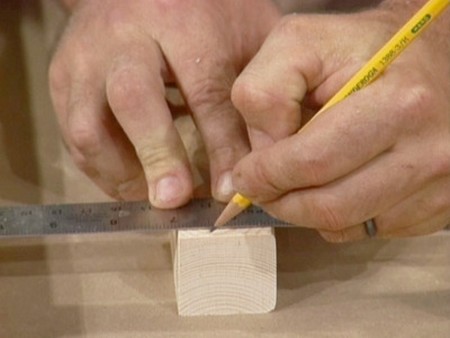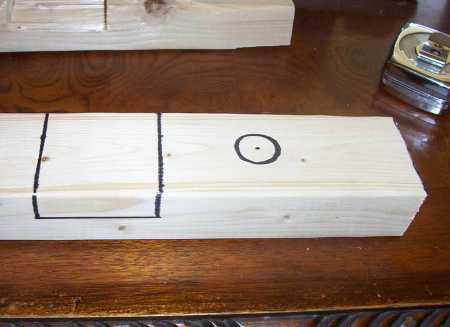Nearly all woodworking jobs involve measuring and marking of one kind or another. The sort of tool you need depends on the distance to be measured, the accuracy wanted and how often the job is likely to be repeated. The importance of accurate measurement and marking out cannot be over emphasised. Often any inaccuracy introduced at this stage of the work cannot be ironed out later and will be reflected in the quality of the finished job. The rule is to measure twice and to mark once but after each marking, check again. A few seconds spent on this stage may save hours of reconstruction or adaptation later.
Measurements and markings on timber are usually made by referring to one edge or face of the wood. To achieve accuracy the wood must be thoroughly prepared so that it has either one or two smooth flat edges or faces (depending on the job). Start by selecting the widest surface which is most free from blemishes and which has the most attractive figure or grain. Plane this surface until it is smooth, then check it for flatness along its length using a straight-edge. Next check the surface for winding by placing two parallel hardwood strips across the timber near to each end. Sight from one end – any twisting should be clearly visible because the length of the hardwood strips will highlight any small differences. Small surfaces can be checked by eye. Continue planing and checking until the surface is flat in all directions. This is now the face side and should be marked lightly by drawing an extended loop with a pencil. Make one part of the loop border on the best edge of the wood.
The next task is to plane the best edge until it is straight and square to the face side use a try-square to check it. Then make a pencil mark on this edge rather like an inverted V so that it touches the end of the loop on the face side.
The wood should now have a smooth flat edge and a smooth flat face and is ready for marking out. All subsequent measurements and markings must be made from either the face side or the face edge.

